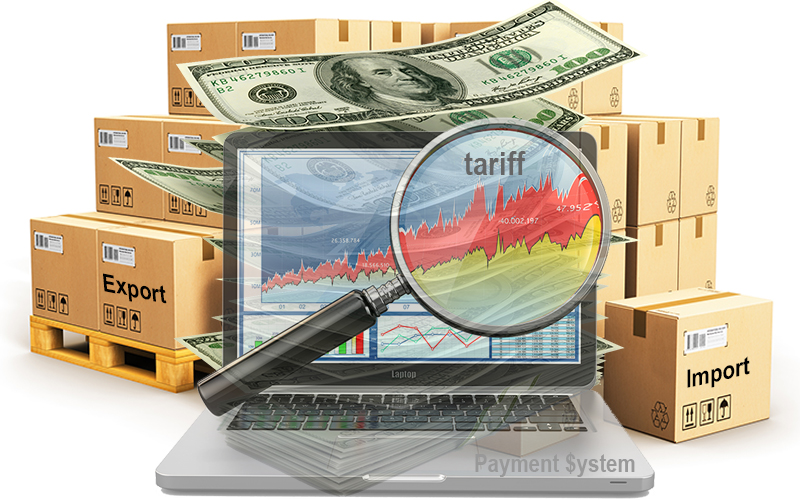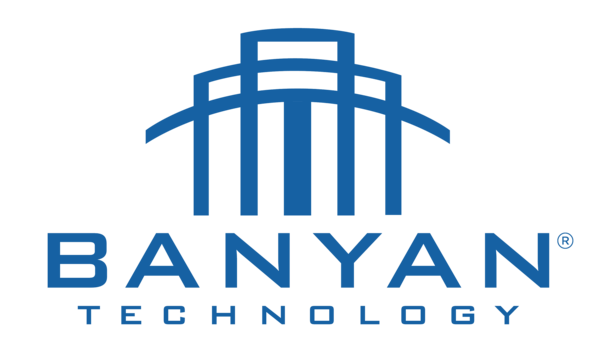Adapting to Changes in Freight Payment Processes

Changes considered by some as “absolutely inevitable” are coming to freight payment services as shippers seek to leverage data for more efficiency, and while innovative and data-driven companies insist there’s a better way, skeptics push back with plenty of experience under their belts.
As technology continues to revolutionize the freight industry, carriers and shippers are beginning to leverage Big Data to unlock the most efficient methods of transport.
After all, computers now help analyze how carriers find the best routes to handle shippers’ freight whether it’s over the road, by rail or even in the air as emergency shipments.
But Where Do We Stand With Billing?
Many shippers are essentially using the same billing and freight rating systems that were in effect prior to trucking deregulation in 1980.
However, some innovators claim that the time is coming for more efficient freight payment processes as carriers seek to be able to dynamically rate shipments based on real-time factors such as mode, speed of delivery and other variable factors.
While many carriers, especially in the less-than-truckload (LTL) sector, have the ability to move freight this way, sometimes they’re hampered in their efficiency by a freight payment structure that’s still in the green eyeshade era - and shippers often pay the price for that inefficiency.
In turn, shippers and many thought leaders in the trucking market believe that parts of the current freight post-auditing system are broken. Though nobody is claiming fraud, they do say that the system could be made smoother by eliminating the labor-intensive functions of the post-auditing process with a “match play” system that involves comparing the carrier invoice with the shipper rate on file.
“The system is broken by the way the carriers can write their own rules into their tariffs,” says Peter Moore, Pricing columnist for Logistics Management. “I want that all in a contract, and the contract will insist on final settlement all in one step.”
For sure, this is a controversial change, but one that its backers say is inevitable. But there are skeptics of this new way of analyzing freight payments who contend that the current system is necessary to minimize billing mistakes and keep everyone above board.
Satish Jindel, principal of SJ Consulting, says that his company examines millions of freight bills a month, adding that freight payment companies are alive and thriving because they fill a need - to keep the carriers honest.
“The freight auditing companies have automated some of the steps,” says Jindel. “But they have to audit every invoice. In fact, LTL carriers have 98% invoice accuracy. However, we do need to build confidence in shippers that carrier invoicing has a high degree of accuracy - but how do you know unless you audit everything?”
As we roll into the new year, let’s examine this controversial topic and then forecast the chances that we may see a revolution in the freight payment processes that are currently in use.
The New Methodology
The current system of freight payment analysis involves computerized examination of mountains of data. But critics say it’s arcane and overly complex.
A new system would still analyze Big Data, but concentrate on getting freight payments correct in the first place - not in an after-the-fact analysis of that data.
According to Logistics Management columnist Moore, a savvy shipper organization doing business with a carrier or a third-party logistics provider (3PL) will want the final data about that shipment to build into its own database.
Today, he says, that data is contained in three silos that are often conflicting and inefficient, and in this current system that data is coming from three different sources and not melded together.
First, carriers set their own separate tariffs. Second, shippers bargain for and accept certain discounts if they accept the tariff rates and conditions. Finally, post-shipment, traditional freight auditing companies comb through millions of freight bills to ascertain whether the discounts and rates were accurate and that the shipment was indeed delivered on time.
“Purchasing people are increasingly involved in transportation,” Moore explains. “Their mentality is: ‘don’t pay until they’ve fulfilled all the obligations.”
Under the new system being devised by some innovative and data-driven companies, they insist that they have a better way to manage and analyze freight payment data.
In this new methodology, once a carrier system of tariffs (and discounts) is selected, invoices are paid without review through a “debit” to a shipper’s own account. With billing and collections estimated to represent up to 7% of a carrier’s costs, backers of the new system claim that those savings more than offset the slight chance that there could be a pricing or rating error in the shipment.
“You have to think of this holistically,” Moore says. “There’s a movement toward linkage between carrier and shipper so that shippers get all of their needs met with one shot.”
The second stage of this new processing system involves freight settlement. This settlement would be triggered by the traditional “proof of delivery” function that would ensure that it was, in fact, delivered on time to the correct address.
The final stage would allow for pricing variations based on time of day, weather, risk, speed of loading and unloading and other negotiable factors. The carrier system must have the ability to dynamically rate shipments based on real-time factors that the shipper can influence, such as waiting time, driver friendly freight and other collaborative factors.
Moore believes that shippers are right in the middle of this transformative process. “People are trying to solve the problem with multiple steps, not one major step. You have to be able to offer the entire package to shippers,” he says.
Players In This Movement
According to Lance Healy, co-founder and chief innovation officer at Banyan Technologies, change in post-auditing freight payment systems “is absolutely inevitable” because of what innovative uses of Big Data now allow companies to do.
“This is a natural evolution of becoming more efficient and faster through easier movement of data,” says Healy, whose company uses real-time information using cloud-based transportation management systems (TMS) to manage data for carriers, 3PLs and shippers. “We have always had the ability to exchange data. In the past, there have been silos of data. Everybody had their own silo and basically said: ‘how wrong is the bill? Let’s spend a dollar to find that lost quarter.’”
But even for Banyan and its 2,000 accounts, Healy says only a fraction are actually using this new system. But he says that, over time, resistance will erode because of the potential cost savings. “Everybody says they want it, but they’re not integrated to get it all at once right now,” he says.
Healy adds that many 3PLs and freight brokers see the benefits of this potential new system right away and are more likely to venture to the new systems because of the inefficiencies of the old. “This is like Uber,” he says. “We are the replacement technology coming in five, maybe 10 years.”
So, what are the ramifications of such a new system? For one thing, when shippers’ technology is connected to the carriers’ pricing systems, the entire idea of negotiating pricing for the year becomes inefficient and redundant, backers of the new system claim.
That’s because these new systems have the ability to quote freight rates directly from what the carriers have published, and that data can easily be captured for each shipper. So, when invoices come in, tech companies can capture that electronic data from the invoice and compare that to the original quote.
According to Healy, the idea of having to examine individual freight bills after the fact becomes redundant. “In fact, if there’s a variance, we can flag it and notify carriers where discrepancies are,” says Healy, who believes this shift is inevitable because it enables shippers and brokers to deal simultaneous with several carriers instead of being constrained by a single base rate.
And those carriers are basing their pricing on what is more reflective of their actual cost of doing business - instead of the traditional methods of attracting new freight with bargain basement introductory rates, then hiking them drastically after a few months.
Resistance Movement
Even though it appears the industry may be moving in this direction, right now it’s still an uphill battle. It’s estimated that less than one-fourth of all LTL shipments are analyzed in this new way.
“It’s the big shippers, especially in retail, that are a little slower to adapt,” says Healy. “Once the bigger and more rigid supply chains start to change, you will see a tipping point. Third-party providers are usually the bellwether, and they’re more accepting.”
Jindel of SJ Consulting says that his ShipMatrix unit is already using sophisticated software to match rates with amount invoiced.
He says the goal is not to spot every discrepancy, only the major ones. “You look to find variances,” he says. “Shipment weights, accessorial charges, if they are within the tolerance of say 1%, then there’s no point to spend $10 to save $1.”
According to Jindel, carriers have become sharper in correcting for improperly weighed shipments - and the start of dimensional weight pricing has certainly increased accuracy. “Shippers will have to realize adjustments are coming because carriers are becoming more diligent in getting weight and density of shipment right on the invoice,” he adds.
The market can count Mike Regan, chief of relationship development for Tranzact Technologies, among the skeptics of this new methodology of freight billing analysis. “What the TMS people want you to believe is that the traditional audit and payment model is obsolete,” he says. “What they’re overlooking is how big is that 2% to 3%? That’s your error rate in a settlement process - whether it’s duplicate payments, overpayment, how you treat accessorials, whatever.”
Regan says that he has yet to see a TMS system that’s 99% correct. “A 2% error factor is very generous, in fact,” says Regan. “We saved 4% for one of our customers on duplication and audit reduction areas. The reality is the audit guys still play a role, and we get paid to cleanse data by people using faulty processes.”
Still, Banyan’s Healy claims that the evolution of pricing and auditing is coming. “We have clients who have not done RFPs in 10 years. It’s insanely more efficient, and it’s fun to watch.”
Related: Cloud-Based Solutions Are Augmenting TMS
Article Topics
Banyan Technology News & Resources
Adapting to Changes in Freight Payment ProcessesLatest in Transportation
Why are Diesel Prices Climbing Back Over $4 a Gallon? Luxury Car Brands in Limbo After Chinese Company Violates Labor Laws The Three Biggest Challenges Facing Shippers and Carriers in 2024 Supply Chain Stability Index: “Tremendous Improvement” in 2023 Trucking Association CEO on New Biden Policy: ‘Entirely Unachievable’ Two Weeks After Baltimore, Another Cargo Ship Loses Power By Bridge Examining the freight railroad and intermodal markets with Tony Hatch More Transportation
















